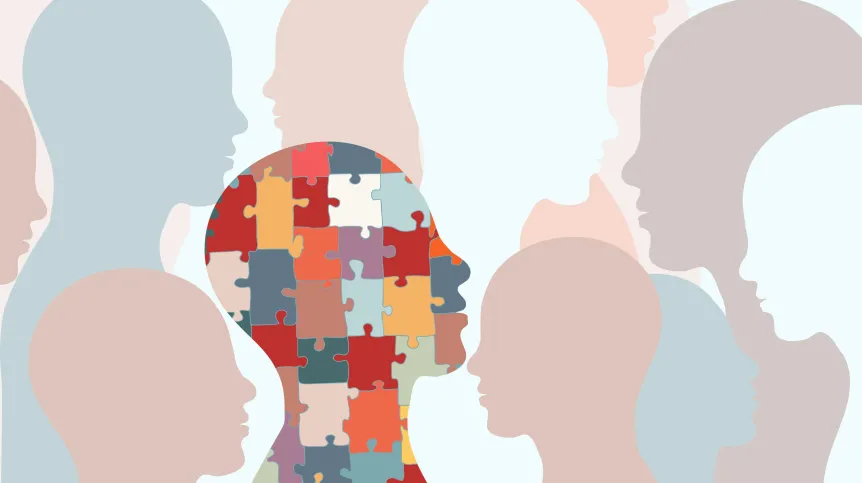
Masking autistic traits or adjusting behaviour to the environment are strategies of people with ASD that are part of the so-called social camouflage.
Dr. Anna Pyszkowska from the Institute of Psychology at the Faculty of Social Sciences of the University of Silesia in Katowice conducted a study among 254 people, 148 of whom were diagnosed with autism spectrum disorder (the control groups were people with social anxiety and dual diagnosis).
'Subjects from all groups regularly used social camouflage. Interestingly, the total camouflage score did not differ between the study groups, suggesting that the tendency to camouflage is transdiagnostic, resulting from anxiety and negative self-perception, and not part of the autistic phenotype', says Dr. Pyszkowska, who is also a practicing psychotherapist working in with people with ASD and ADHD.
She explains that social camouflage - usually associated with people on the spectrum of autism - is a strategy for dealing with situations in which we lack certain social skills, e.g. we do not know how to behave, so we start imitating others. 'The second area concerns masking autistic traits and hiding autistic identity in general. The third one concerns adapting to others, e.g. when everyone in the group laughs at a joke, I will do the same, even though I do not understand it', Pyszkowska says.
She adds that for some time, the social camouflage strategy was perceived (also by psychologists) as something completely positive - something that helps people on the autism spectrum find their place socially. 'Of course, there are situations in which camouflage allows them to cope emotionally and socially, which is also emphasised by the patients themselves, but more and more scientific reports show that the cost of such behaviour is huge', she says.
'My research has shown that the use of social camouflage is very tiring, exhausting even. This leads to burnout, sensory overload and a feeling of losing one's identity: because if I behave differently in every situation, who am I, really?' she continues.
The autism spectrum is one of the forms of neurodiversity - that is, the functioning of the human brain, which translates into a specific way of perceiving the world and reality. 'People on the autism spectrum receive and encode more stimuli than neurotypical people, which is why they often perceive the world as overwhelming, and this translates into their emotions and behaviour', says Pyszkowska.
According to her, social camouflage is a new issue that psychology first addressed in the 21st century. 'One of the reasons for exploring this phenomenon is that we are actually seeing more and more autism spectrum diagnoses among adults and we wonder why they were diagnosed at such a late age. In many interviews, these people admit that for years they hid some of their traits or had their own strategies for dealing with specific situations - that is, they regularly used social camouflage’.
She adds that this applies especially to women. 'One of the reasons why women are diagnosed less often is that - compared to men - they are under greater socialisation pressure, i.e. little girls are taught rules on how to behave, e.g. be polite, do not stick out, adapt to the group, etc. They often hide their neurodiversity so well that they hear: how do you do it, it is impossible to tell that you are on the spectrum. But for them it is not a compliment at all', Pyszkowska says.
'More and more patients admit that they are tired and cognitively overloaded (since they have to imitate others all the time, they also have to constantly observe them and remember various reactions or behaviours). This also leads to stronger self-stigma: I constantly have to adapt, which means that others do not want to know me as I really am. There are also scientific reports linking social camouflage with anxiety and depression', she adds.
In her opinion, the results of her research may have applications in diagnosis and therapy.
The paper with the research results was published in the Journal of Autism and Developmental Disorders. The publication was created as part of a project financed by the Polish National Science Centre; more papers are to be published soon. (PAP)
PAP - Science in Poland, Agnieszka Kliks-Pudlik
akp/ bar/ kap/
tr. RL













